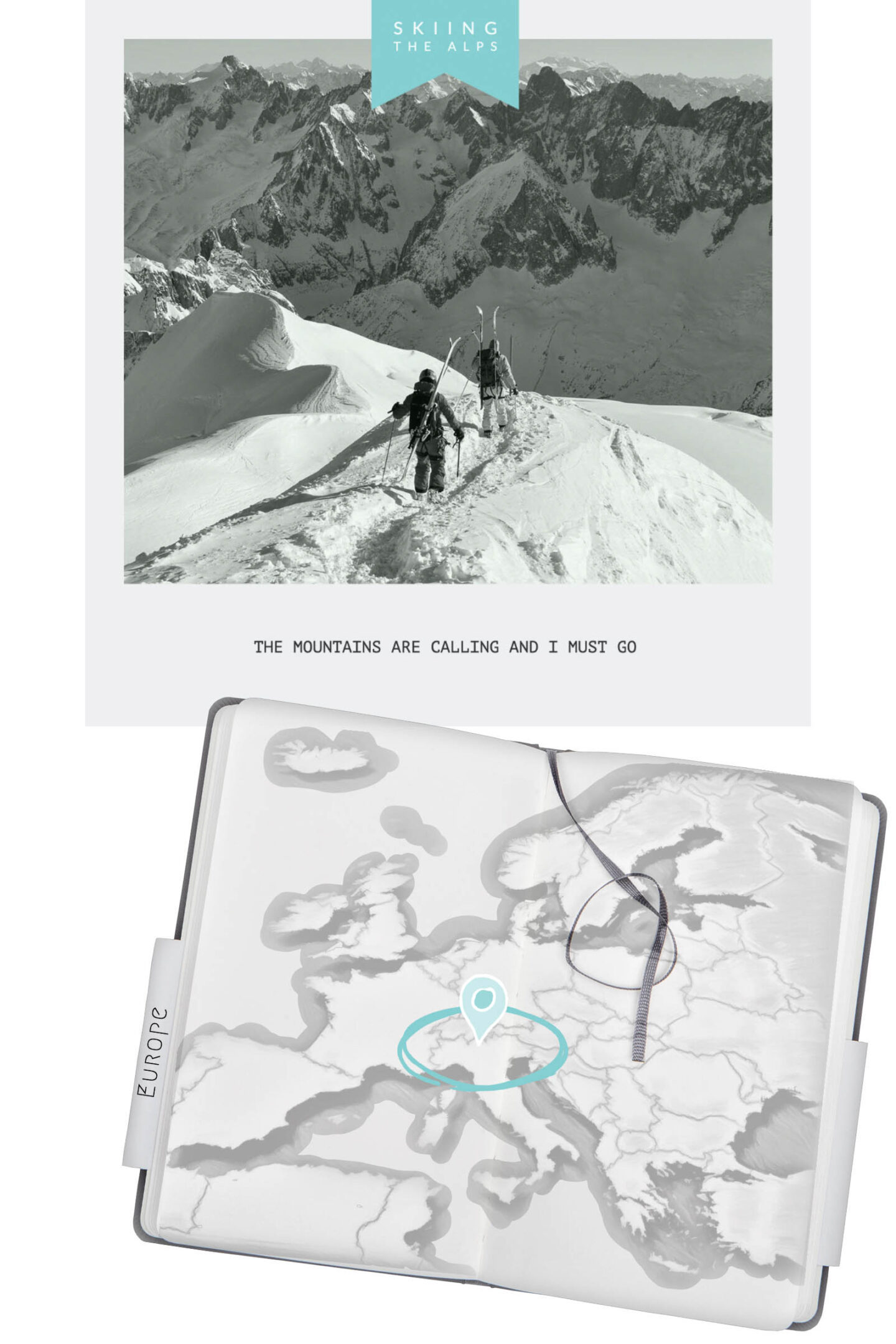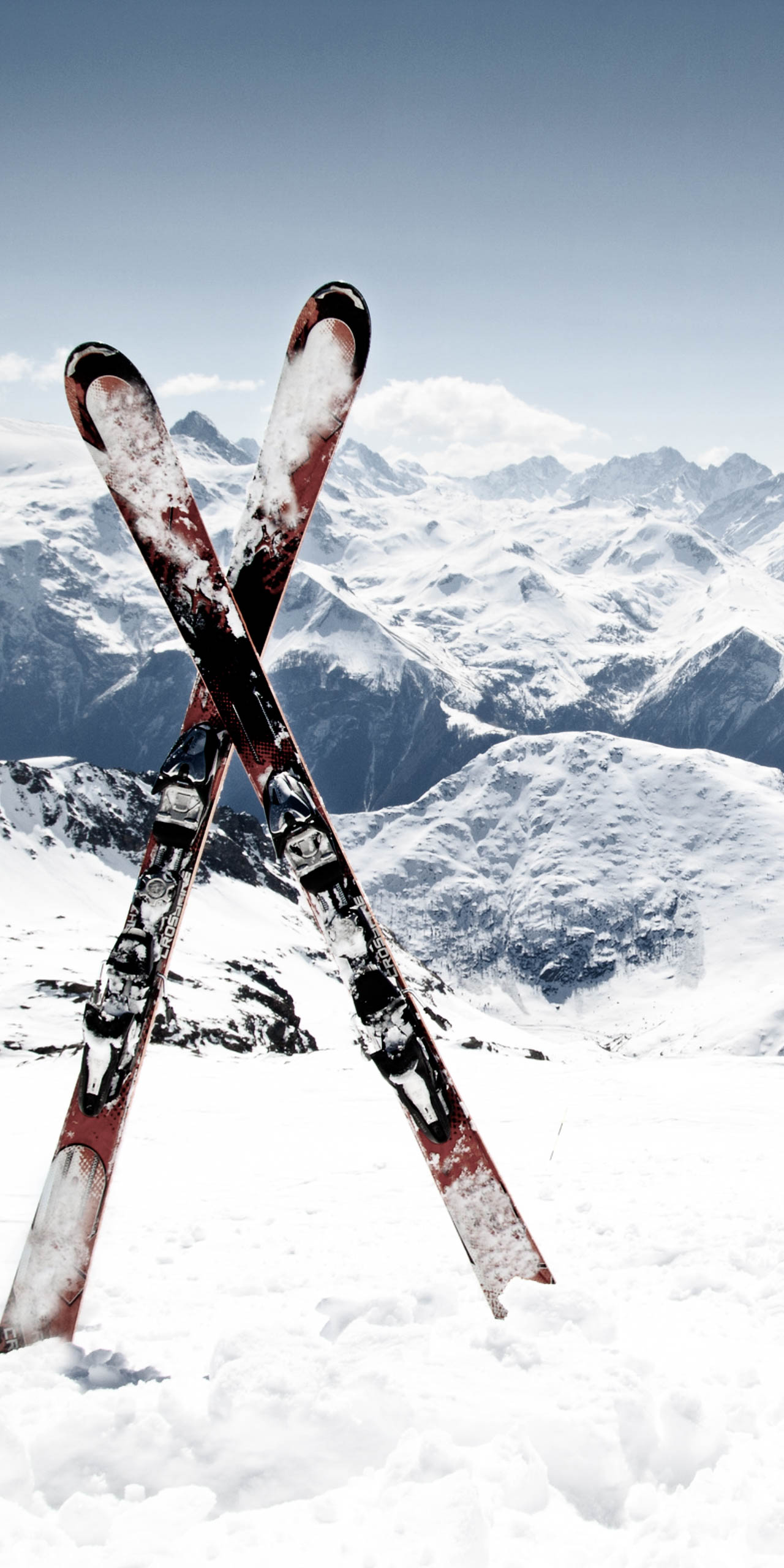_
The Alps: Europe’s cherished ‘White Towers’
The Alps are an extensive mountain system located in south-central Europe. Its mountain ranges comprise numerous peaks and valleys of various heights and depths which extend for about 1,200km / 750miles in a crescent shape across eight countries: Austria, France, Germany, Italy, Liechtenstein, Monaco, Slovenia and Switzerland.
The highest peak of the Alps is Mont Blanc (‘the White Mountain’) which rises to an elevation of 4,808m / 15,774ft on the border of France and Italy. The equally famous, pyramid shaped, Matterhorn rises to a height of 4,478m / 14,692ft at the border of Switzerland and Italy. Overall, there are about 100 peaks higher than 4,000m / 13,120ft in the Alps.
A staggering 120million tourists from all over the world visit the Alps on a typical year, most of them to enjoy their favourite winter sport.
There are currently more than 1,100 ski resorts throughout the Alps with France, Austria, Switzerland and Italy taking the lead in ski resort quantity, size and prestige. Many ski resorts are interlinked, forming immense ski areas (known in France as Grands Domaines). Some of them spread across two countries! All-in-one ski passes allow skiing from one resort to another at one’s leisure.
Skiing the Alps is like nothing else you’ve ever experienced…

SKI RESORT REVIEWS & GUIDES
Explore the ski resorts of the Alps
PLANNING A SKI TRIP TO THE ALPS?
Here’s what you need to know
HOW HIGH ARE SKI RESORTS IN THE ALPS?
The highest ski resort in Europe is Val Thorens in the French Alps. Its base is located at 2,300m / 7,500ft and its highest chairlifts reach 3,270m / 10,730ft. However, the highest ski slopes are found in the ski area of Zermatt-Matterhorn & Breuil-Cervinia at 3,899m / 12,800ft in the border of Switzerland and Italy.
Most modern purpose built ski resorts in the Alps, such as Alpe d’ Huez and Avoriaz in France or Sölden and Gurgl in Austria are based at around 1,800m / 5,900ft. Historical resorts such as Kitzbühel in Austria or Gstaad in Switzerland are based a lot lower, at around 1,000m. However, in most cases, elevations of up to 3,000m / 9,850ft can be easily reached via a network of gondolas.
A typical example of the evolution of ski resorts over time is glitzy Courchevel in France. It features four interconnected settlements at elevations between 1,300m / 4,250ft and 1,850m / 6,050ft.
As a rule of thumb, the higher the ski resort the more snow-sure it will be, though, the village will likely be less traditional. It’s worth checking the altitude of your ski resort (base and lifts), especially if you are travelling towards the beginning or end of the season (opt for >1600m / 5,250ft) or if you are really keen on authentic alpine architecture (most likely found <1600m / 5,250ft). Wishing for a bit of both? Opt for a low altitude village which is connected to a high altitude ski area (though it will take you several bubble or chairlift rides to get to the top).

THE SKI SEASON IN THE ALPS: WHEN IS THE BEST TIME TO VISIT?
THE OPENING OF THE SKI SEASON IN THE ALPS
The ‘official opening’ of the winter season in the Alps is the end of November or early December. Most major ski resorts typically open their ski lifts then. Val Thorens, the highest ski resort in Europe, is usually among the first to open and so is Zermatt as it features some of the highest pistes in Europe.
CHRISTMAS & NEW YEAR’S EVE IN THE ALPS
By mid-December, the Alps typically experience significant snowfall, so most ski resorts can more or less guarantee that their slopes are open at Christmas. Still, during years of little precipitation, the situation might differ. For that reason, it is always best to choose higher altitude resorts for your Christmas ski trip to the Alps. If you are visiting a medium to low altitude ski resort (<1,600m / 5,250ft), you might need to spend the day exclusively on the highest pistes in order to find reliable snow coverage.
HIGH SEASON IN THE ALPS
High season takes off from mid-January. By then, snow coverage is good on most resorts. During February and well into March, the Alps are at their best. Skiing conditions are generally excellent. If you wish to visit a low altitude ski resort, this is the best time to do it.
LATE SEASON & SPRING SKIING IN THE ALPS
Towards the end of March, some ski resorts can face melting snow though high-altitude (>2,000m / 6,560ft) and north facing slopes will still have good snow conditions. It is around mid-April that the ski season in the Alps comes to an end. High altitude slopes will still have some snow for a while, but most ski resorts are now closed.
SUMMER SKIING IN THE ALPS
From about mid-May onwards, the Alps enter the summer skiing season during which skiing is confined to the glaciers.
AVOIDING ACCOMMODATION PITFALLS & CROWDS
DID YOU KNOW ABOUT THE SATURDAY TO SATURDAY ITINERARY?
A week-long ski trip is a typical choice when visiting the Alps in winter and Saturday to Saturday ski holidays have long been the standard for the European ski industry. Most organised ski trips are booked on that basis but even if you travel independently, many chalets and even hotels will request that you book on that schedule. Moreover, most of the ski schools follow suit and offer group lessons from Sunday to Friday. As a result, Saturday is known as changeover day.
What does changeover day mean for you? Usually Saturdays on ski resorts are synonymous with more traffic on the road and less traffic on the slopes. Therefore, if you can travel any other day, you are bound to have a more pleasant journey and enjoy a quiet day on the slopes.
CAN YOU AVOID THE WINTER SCHOOL HOLIDAYS?
Have you ever noticed a sharp spike in flight and hotel prices in European ski resorts over specific weeks (apart from Christmas, New Year’s or Easter)? That is because of the, lesser known, winter term school holidays. The dates vary from country to country and even within different regions of the same country. However, the second half of February seems to be a recurrent hotspot for school holidays in most European countries.
My advise is to avoid ski trips on those weeks if you can help it. Not only is there a significant increase in prices but ski resorts get really busy. There are long chairlift queues, restaurants require reservations, ski lessons need to be booked in advance not to mention road traffic.
Browse flight and accommodation prices for 1-2 weeks before and after your intended dates to make sure that you are getting the best value for money, and, enjoy the mountains… as nature intended.
Did you know?
A piste is a French term used throughout Europe; its North American equivalent is ‘trail’, ‘slope’ or ‘run’.
Piste classification may vary from country to country, check out the differences here.
Explore the blog for more skiing:

















